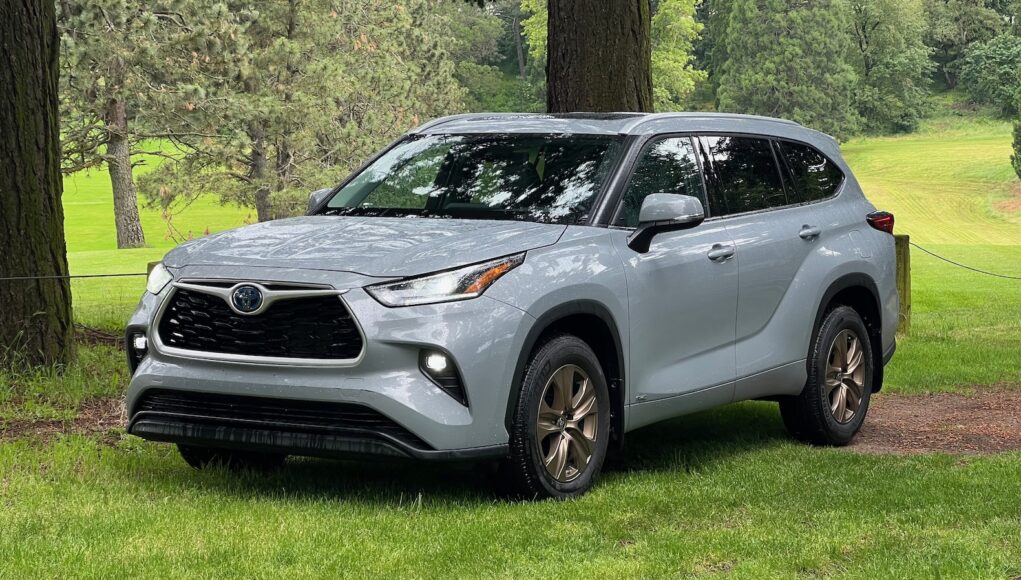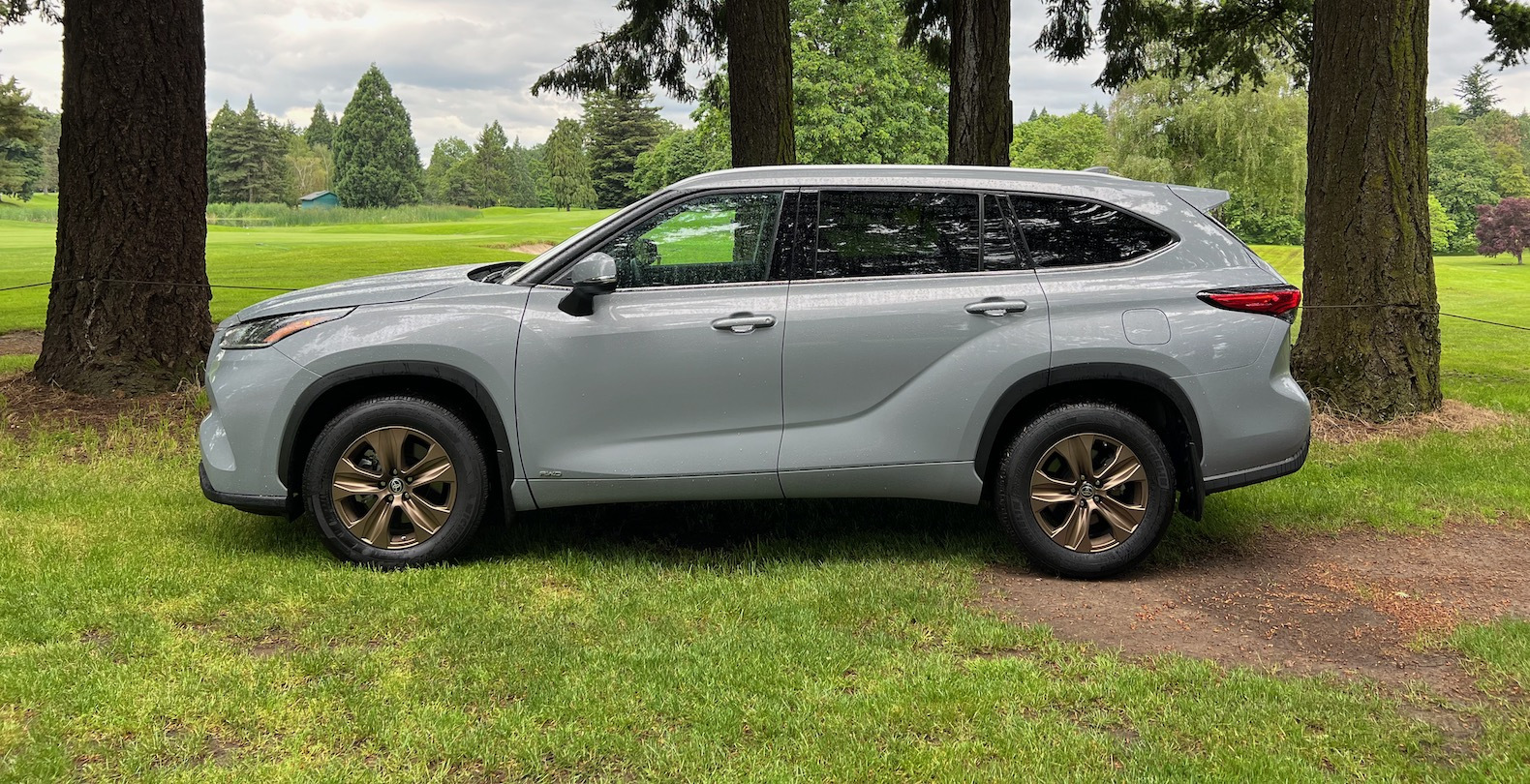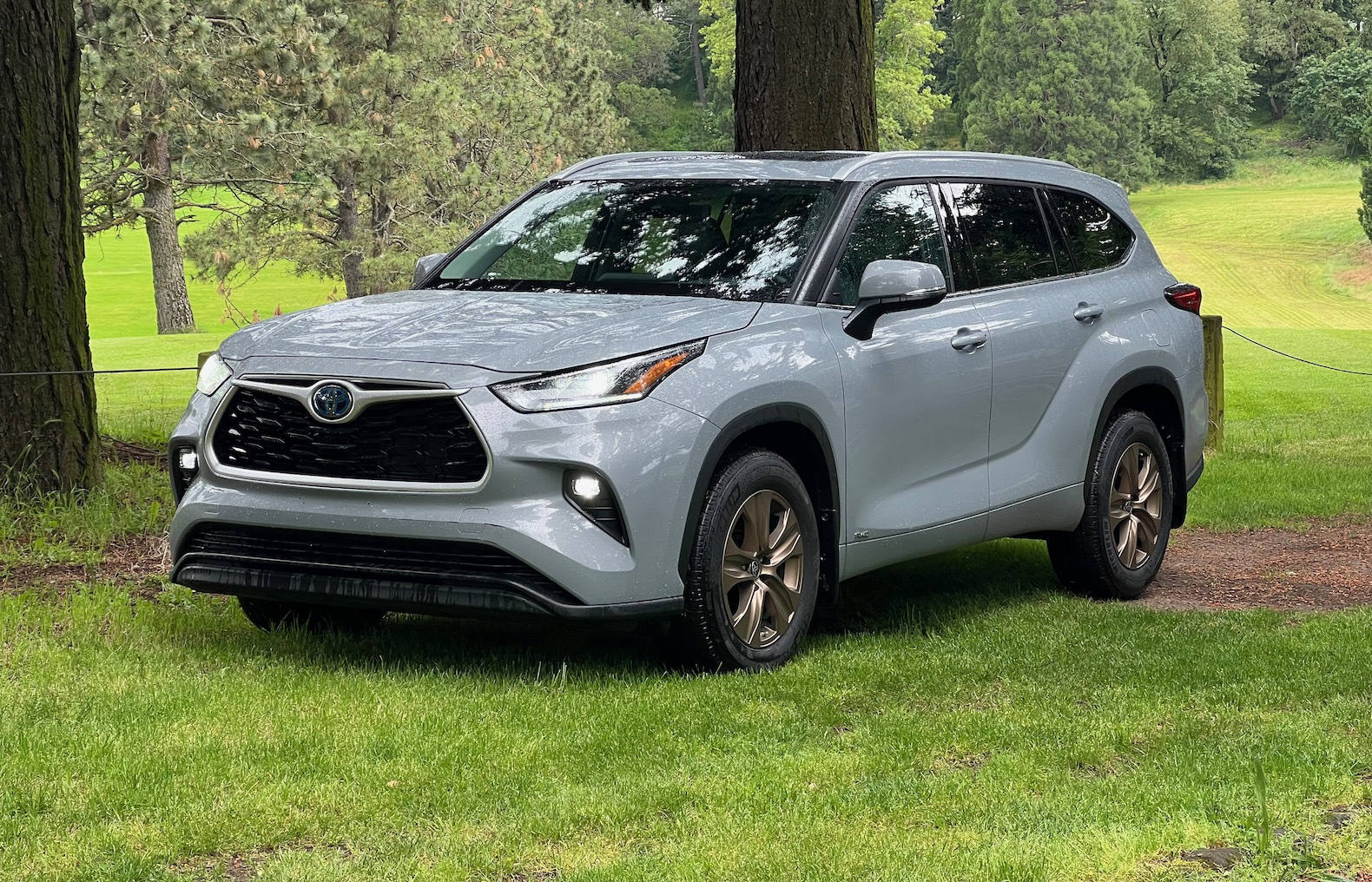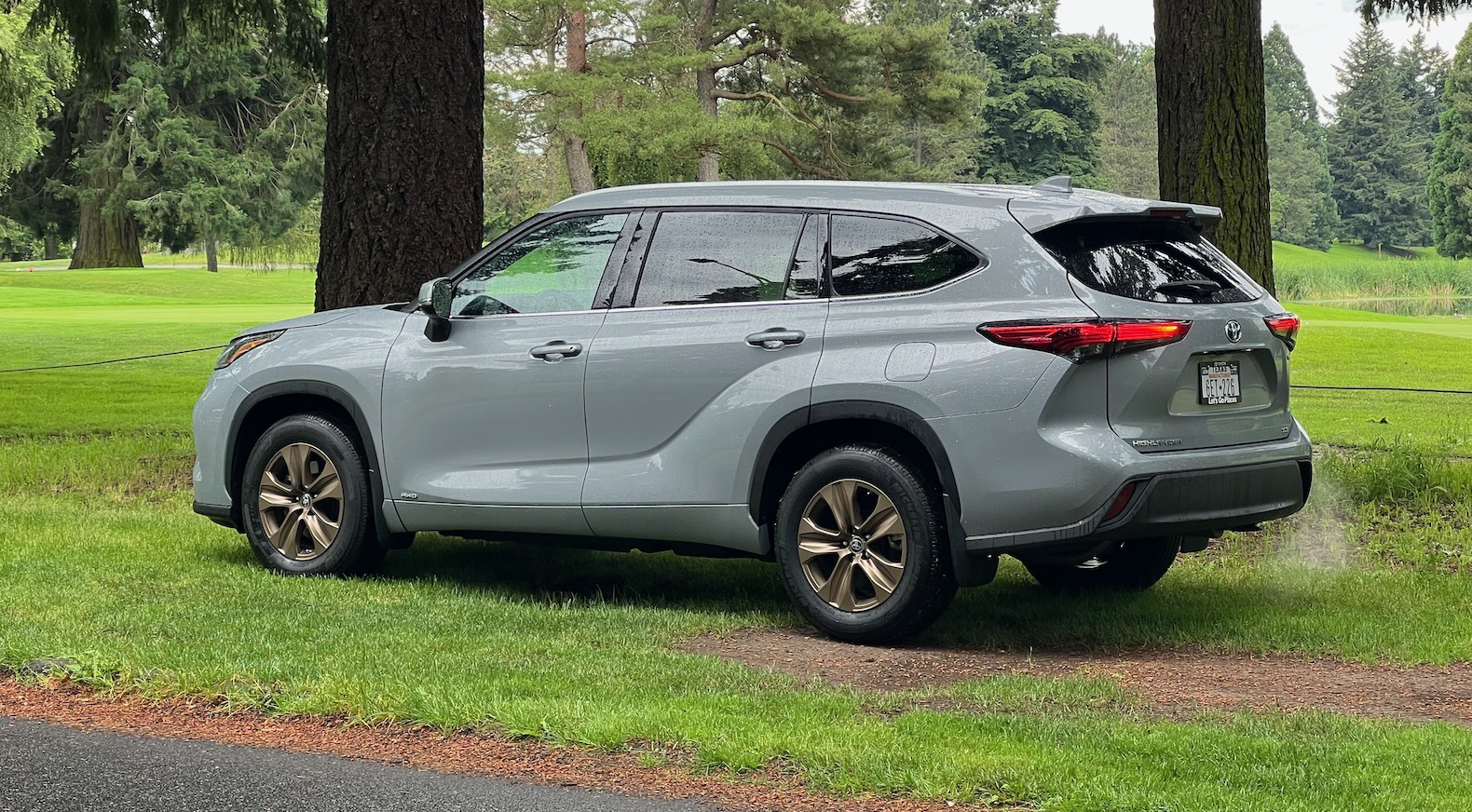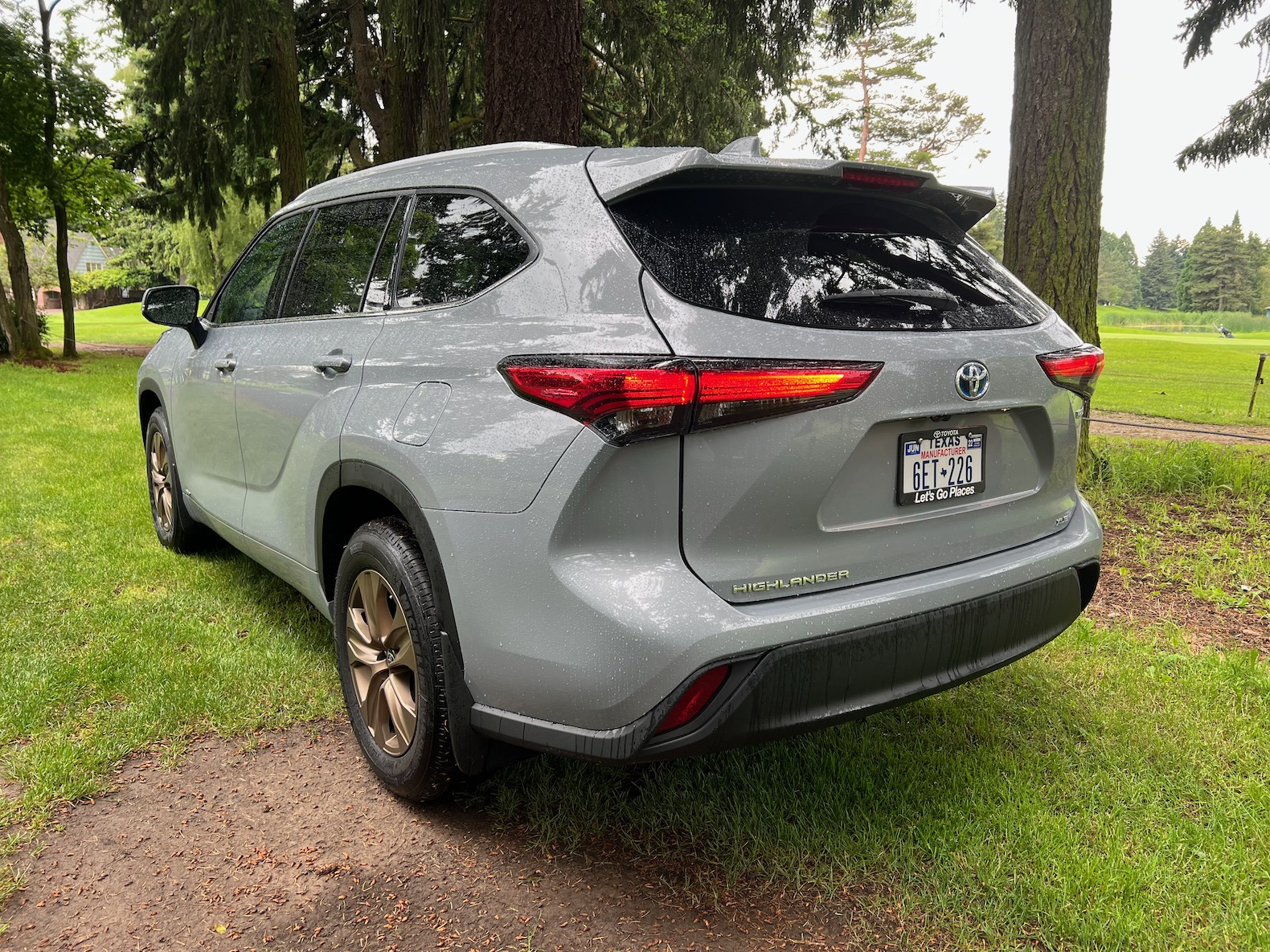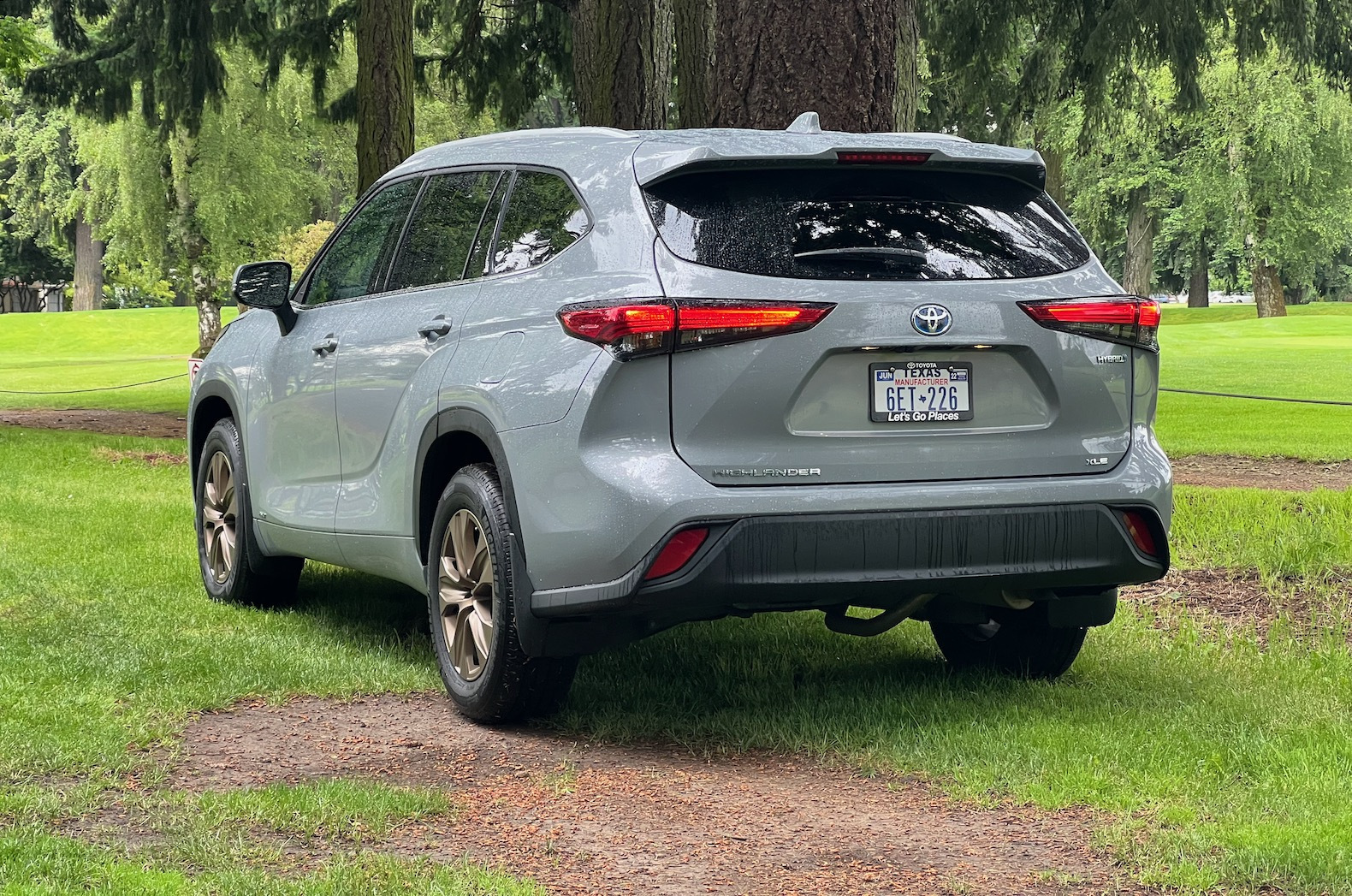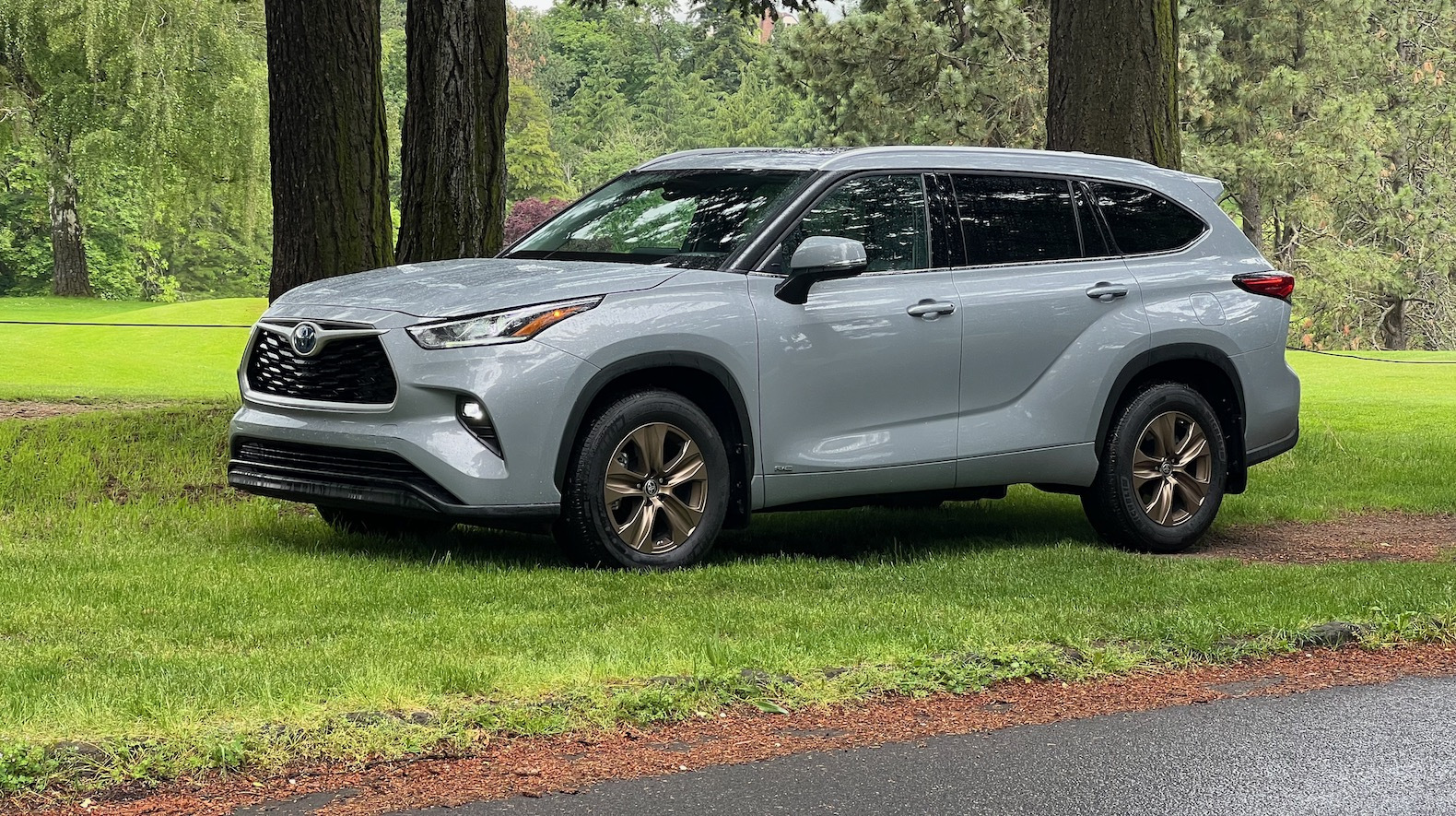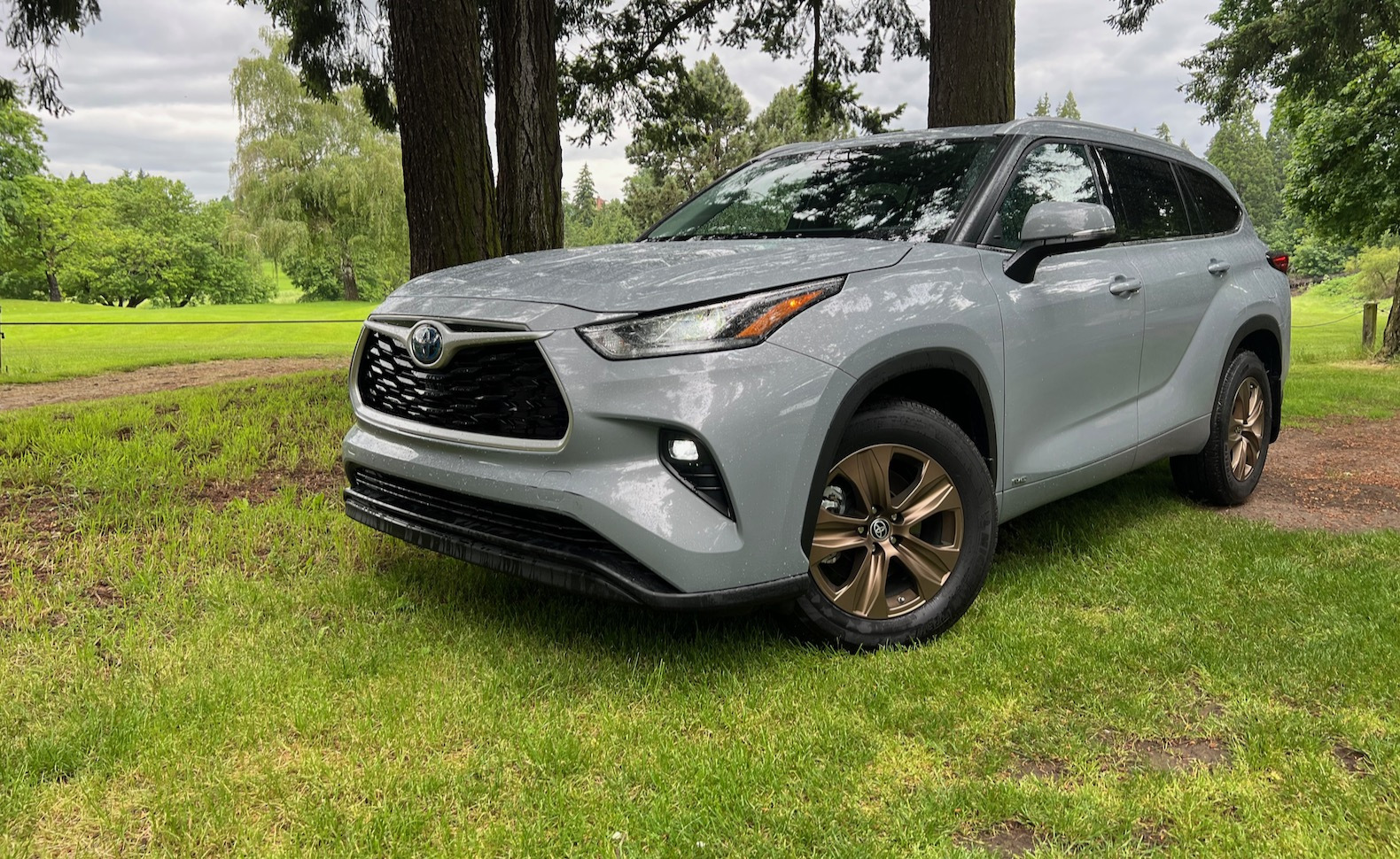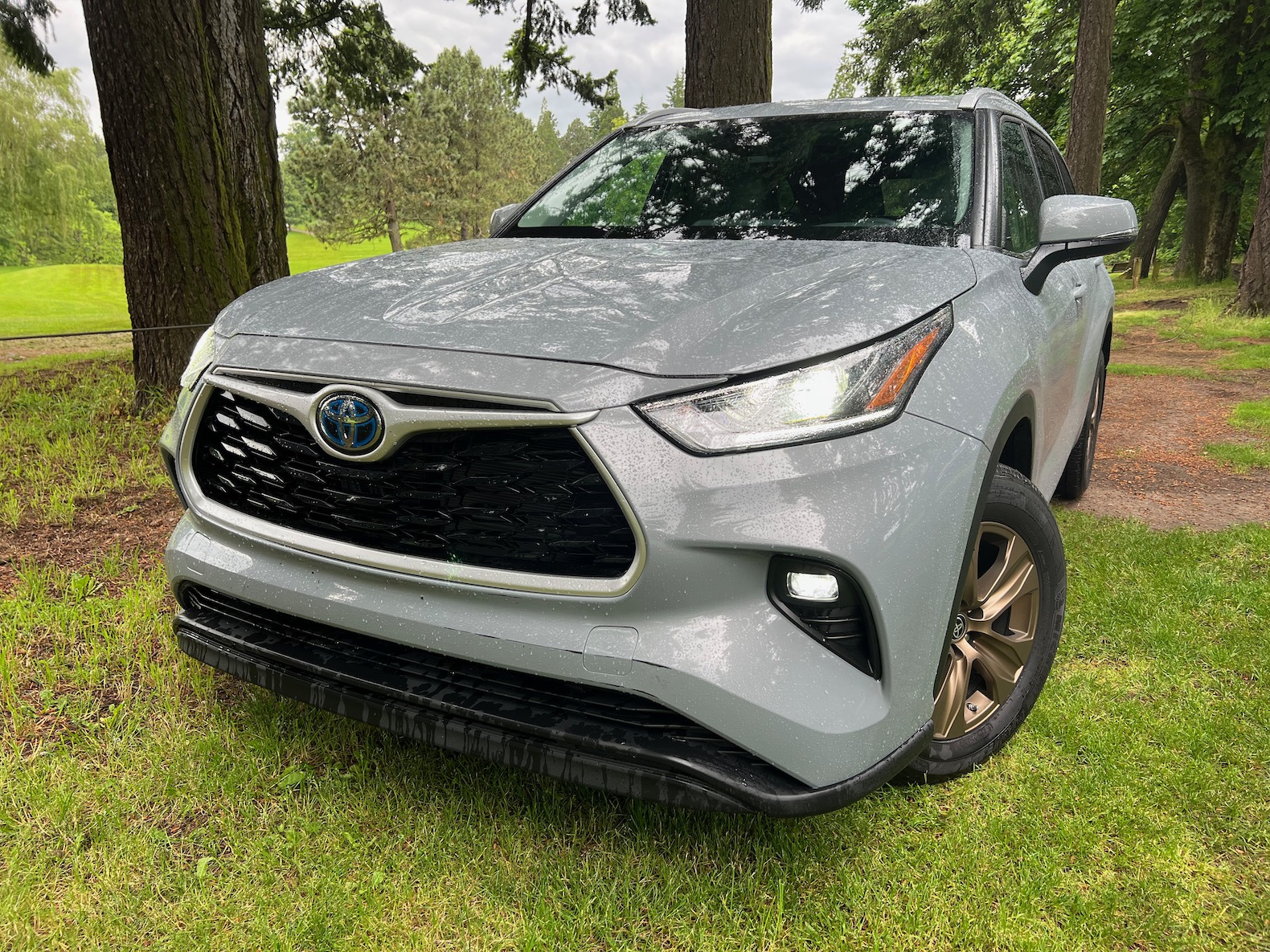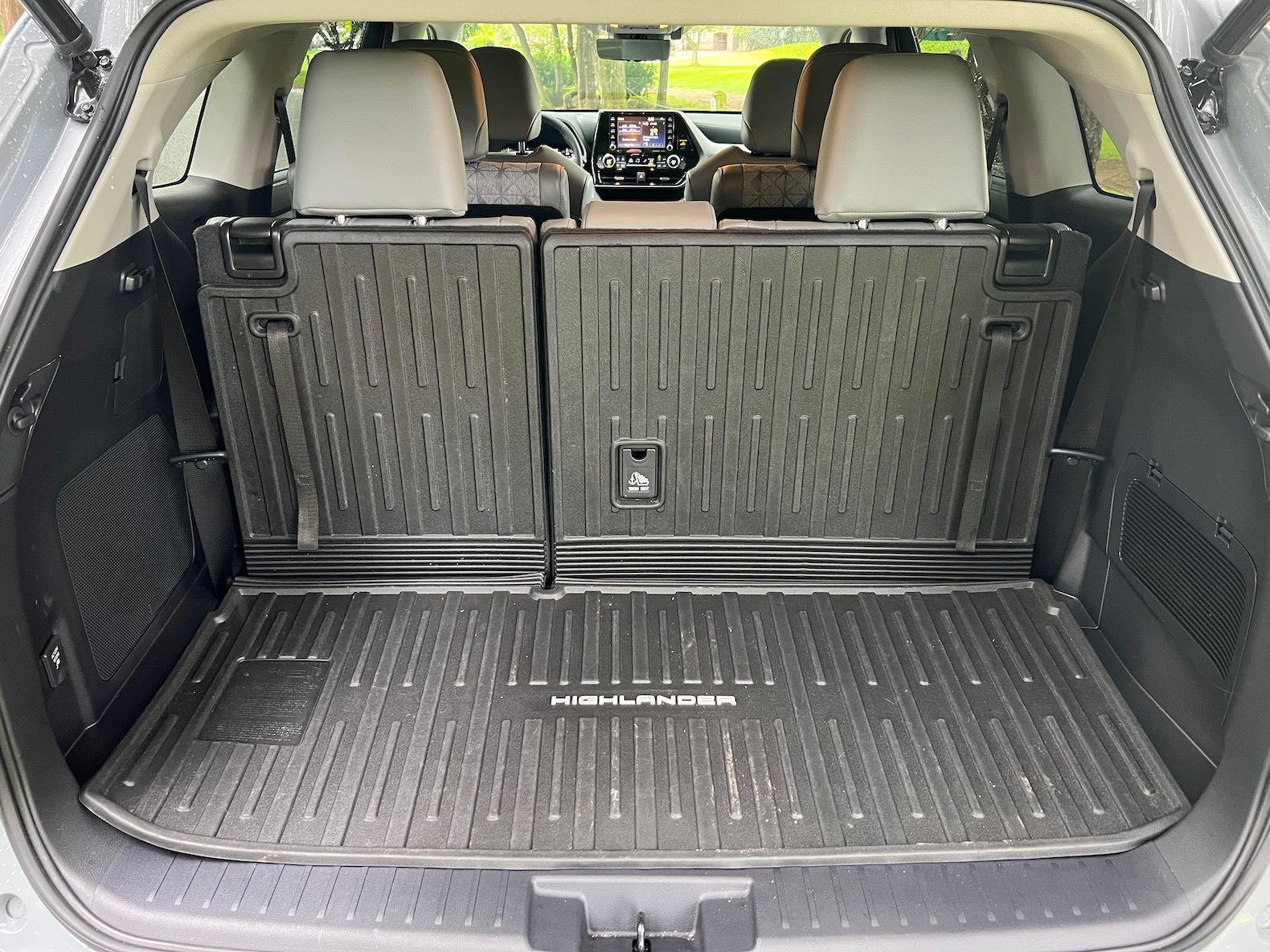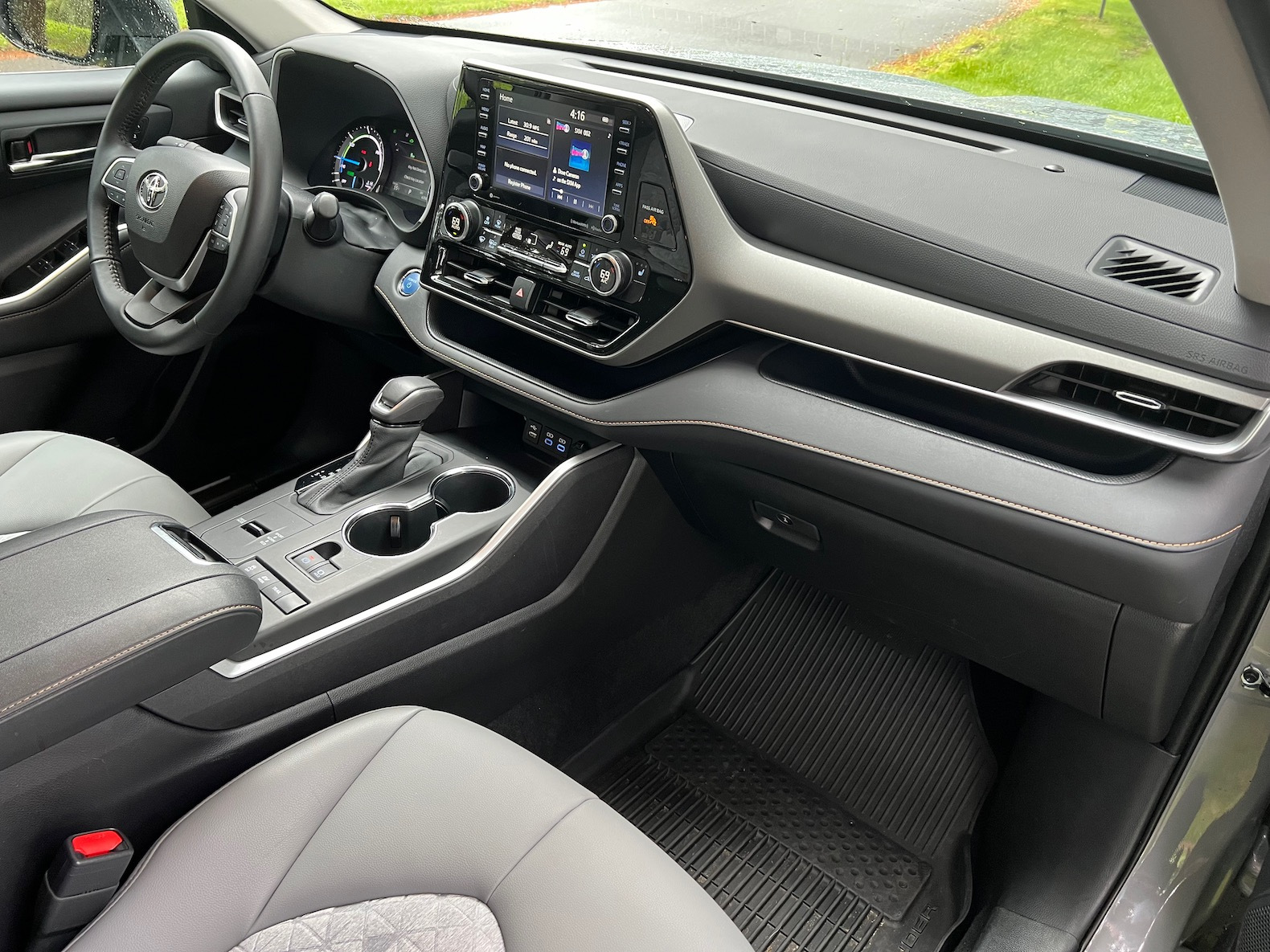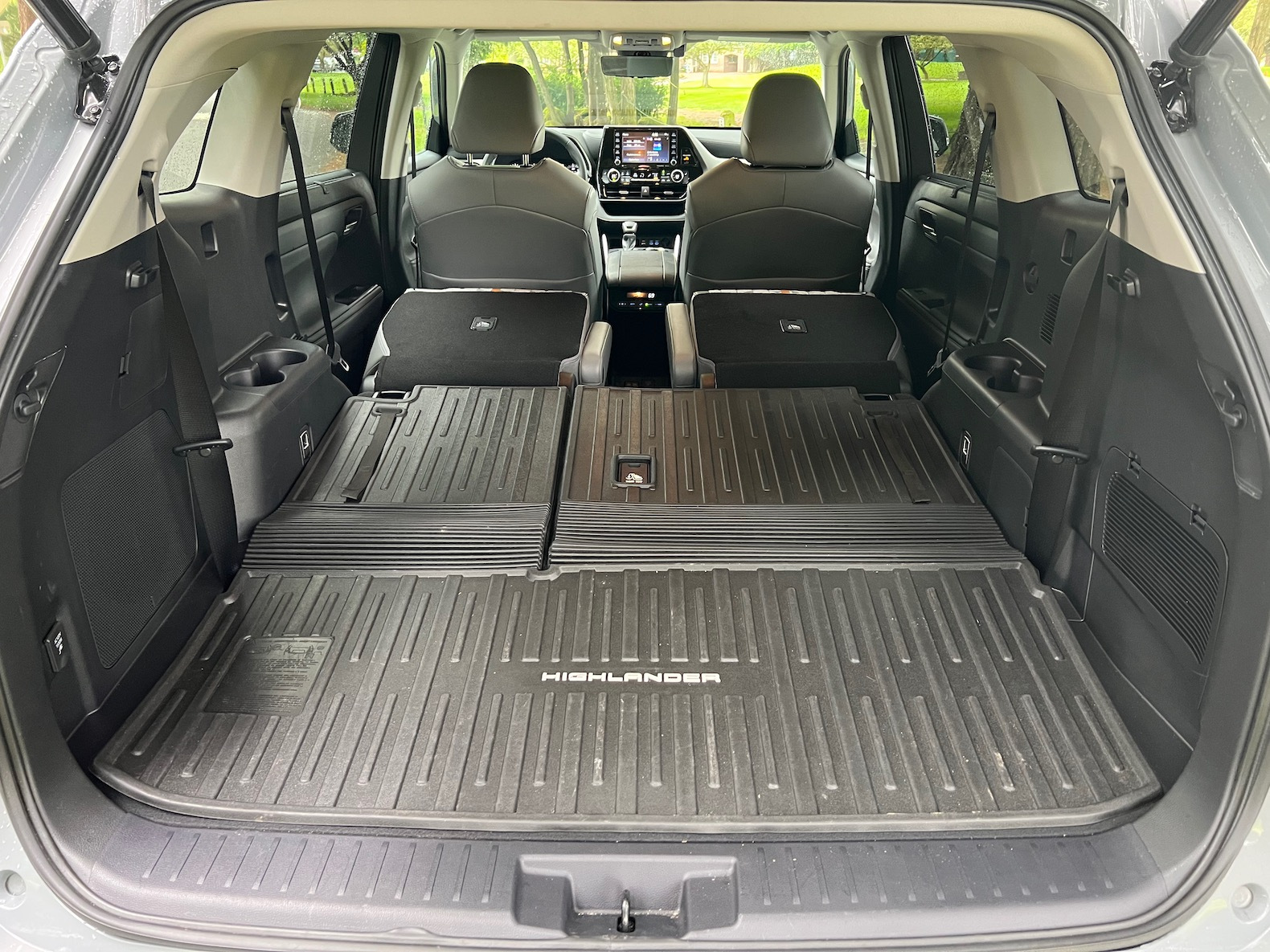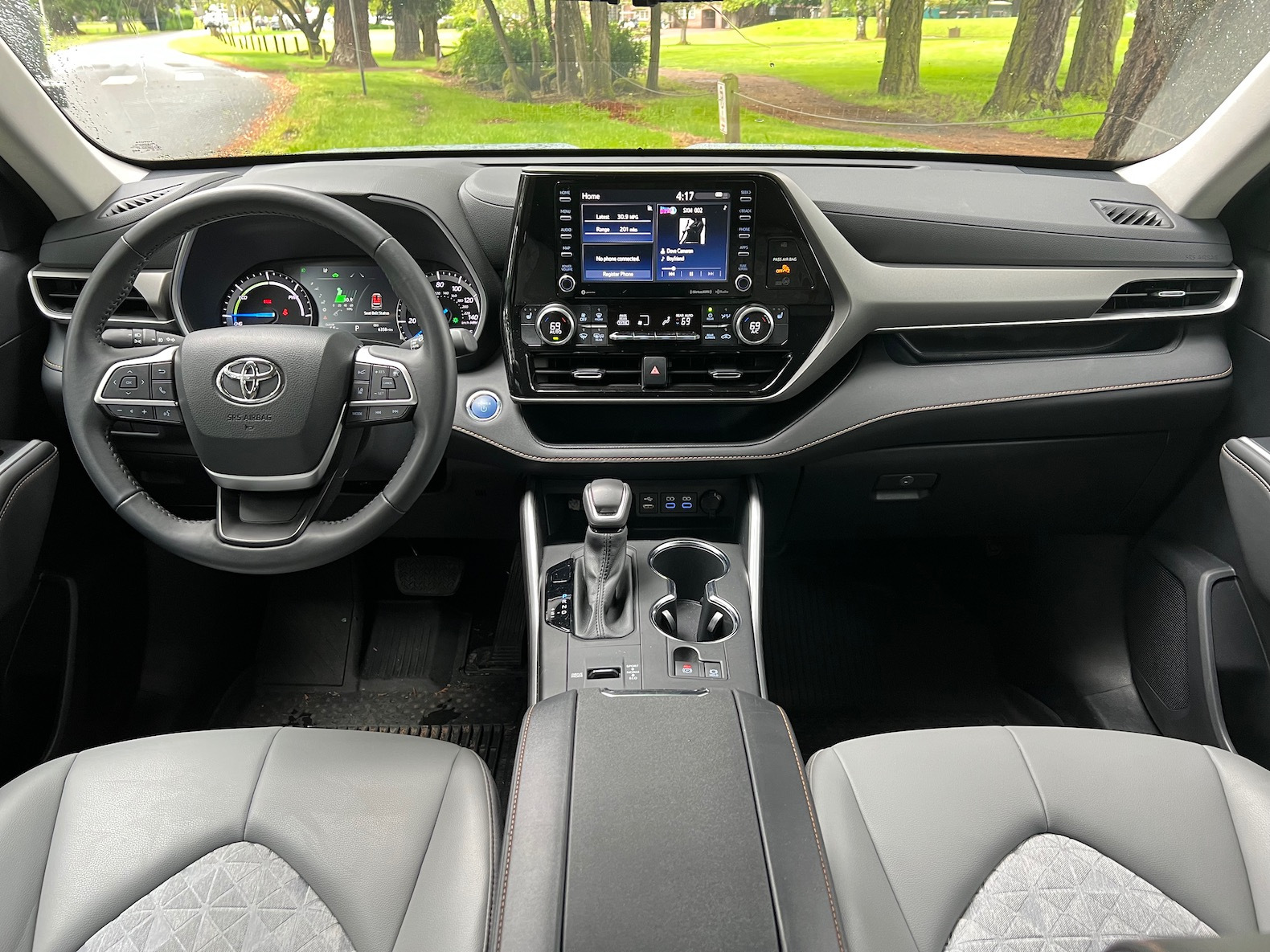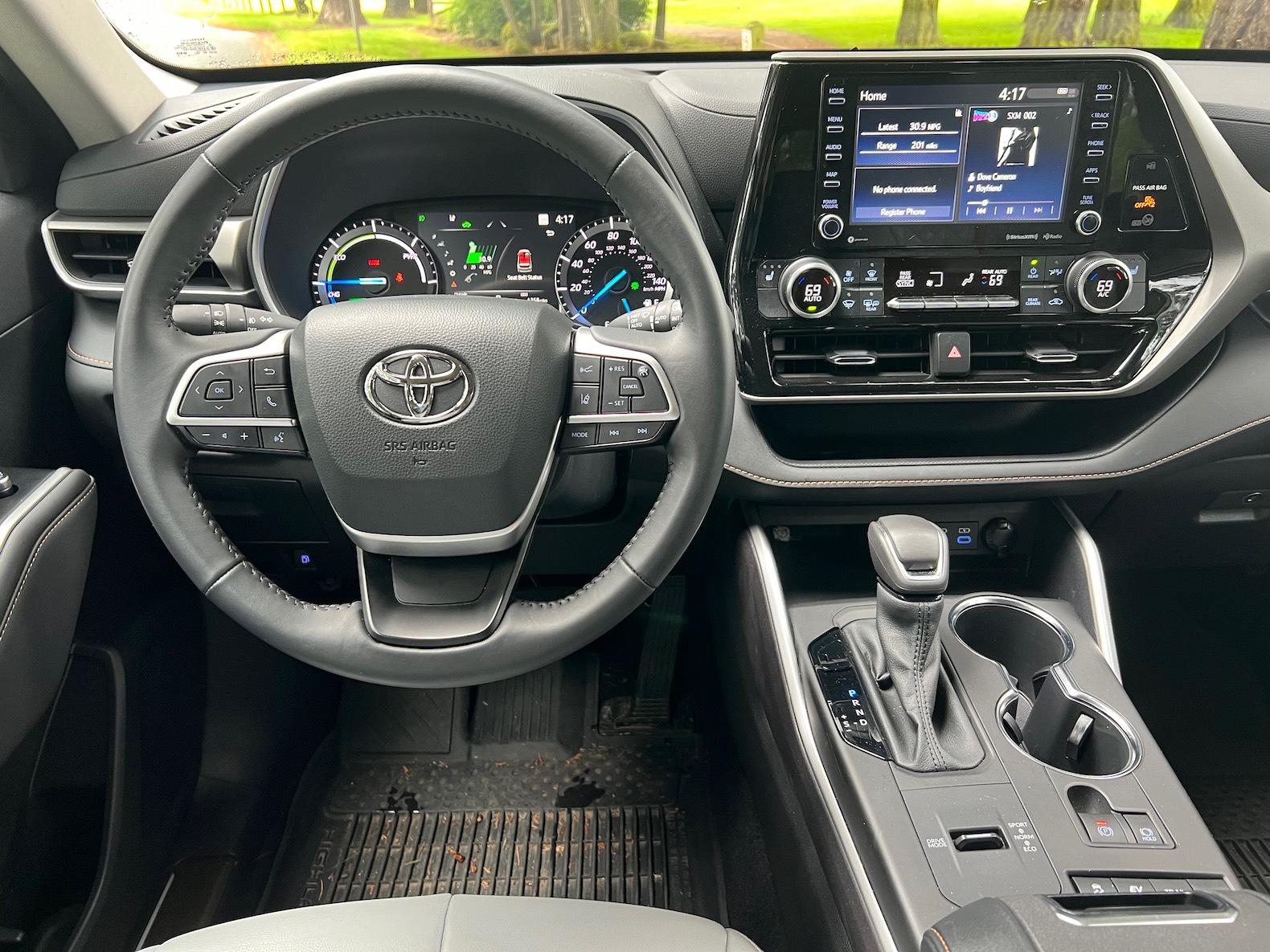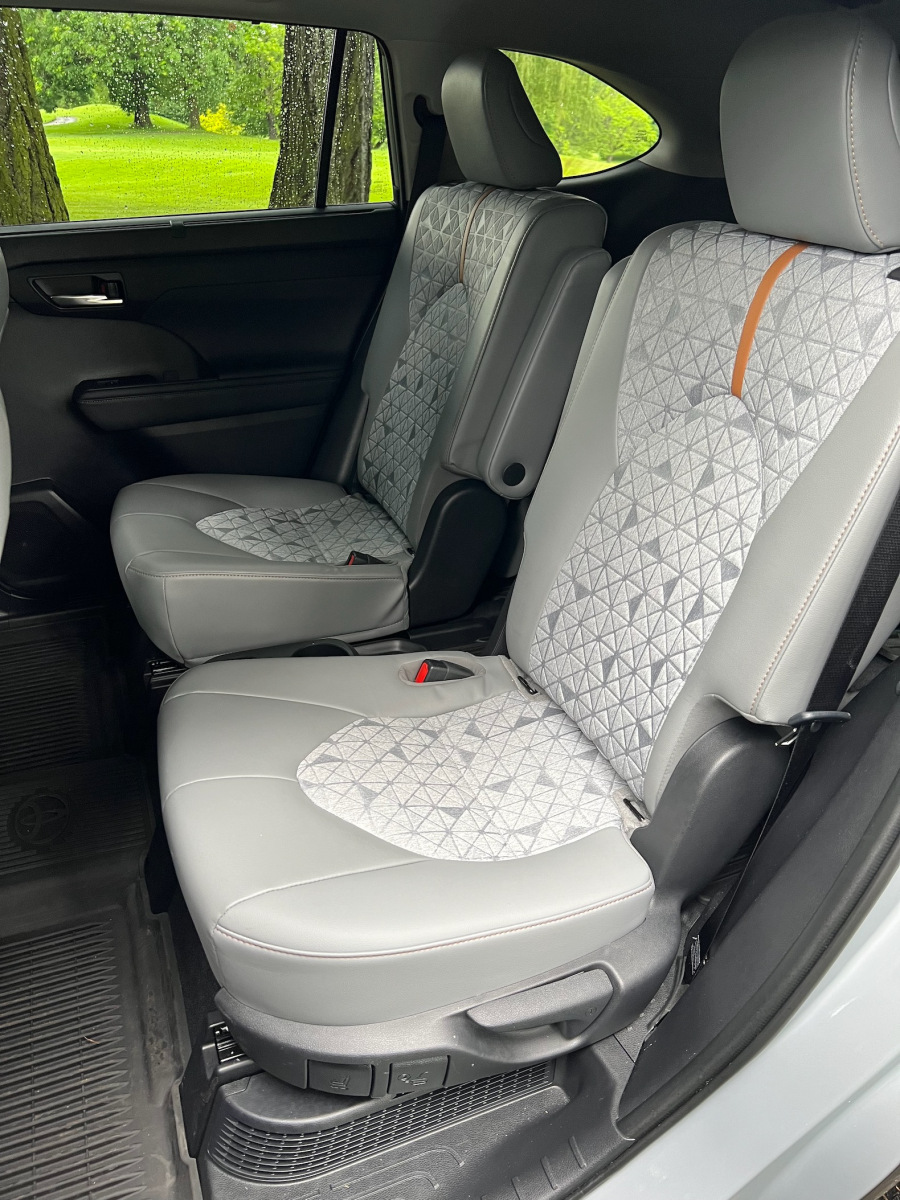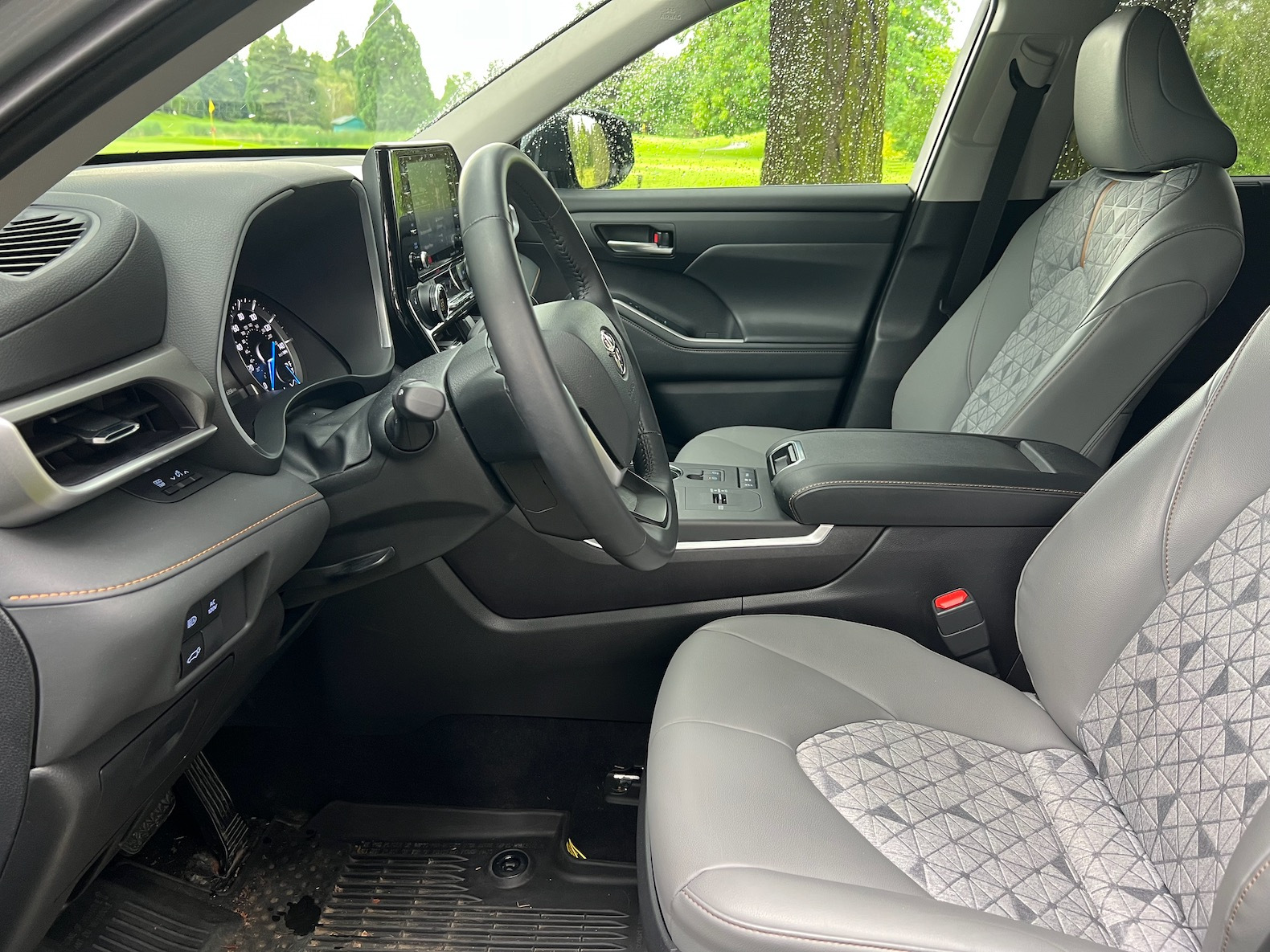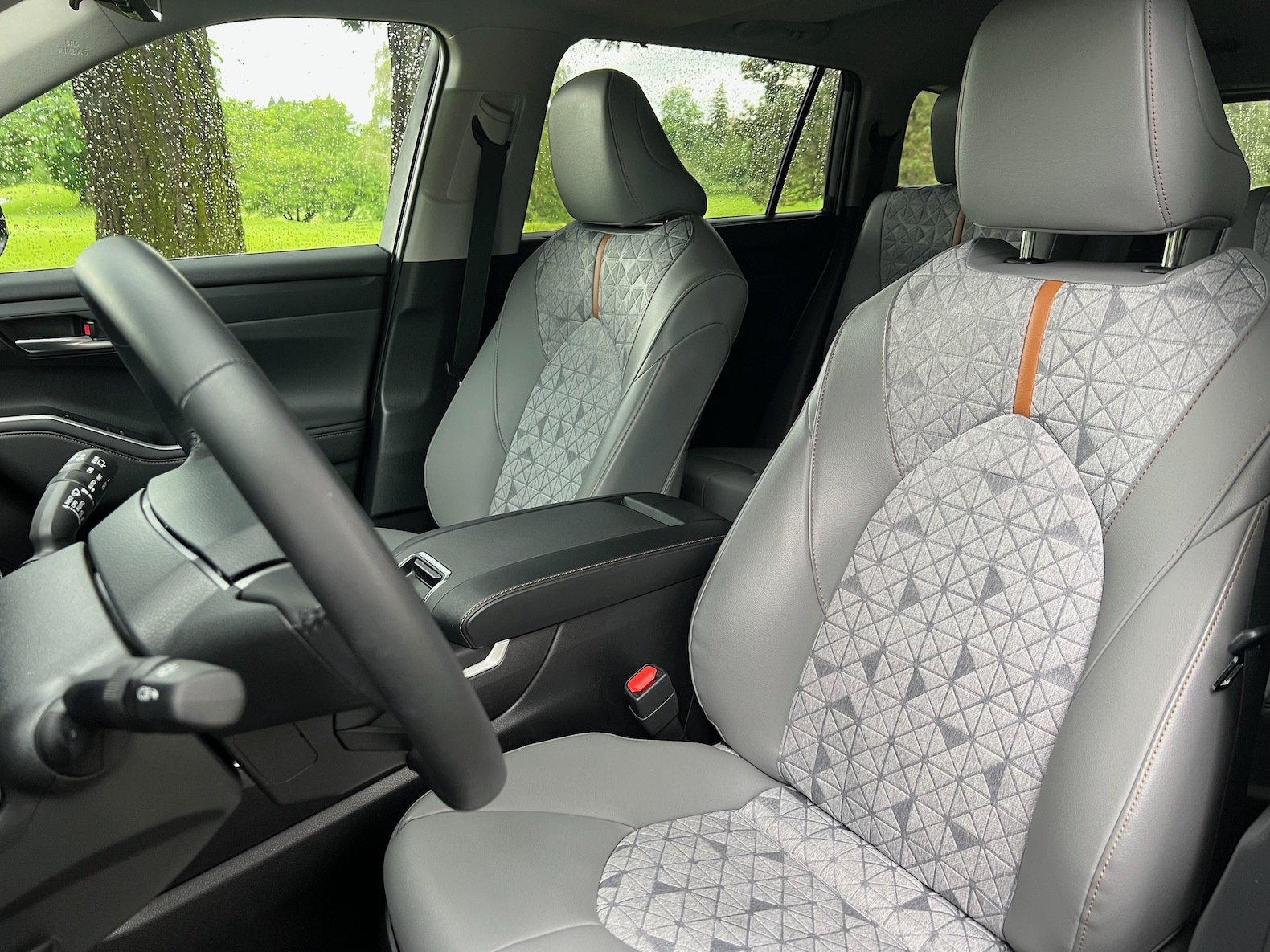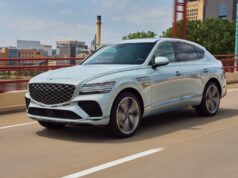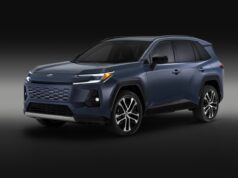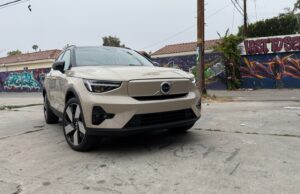The 2022 Toyota Highlander accomplishes minivan feats of utility, without doing the minivan dance. The Highlander sells families on its three rows of seating and its super-efficient Hybrid edition. It’s big but user-friendly, weirdly athletic-looking, flexible for people and cargo, and a good value in middle trims. Rivals include the VW Atlas, Honda Pilot, and Kia Telluride. Not much is new for the 2022 Highlander, save for a bronze trim package and a power passenger seat on XLE Highlanders and those priced higher.
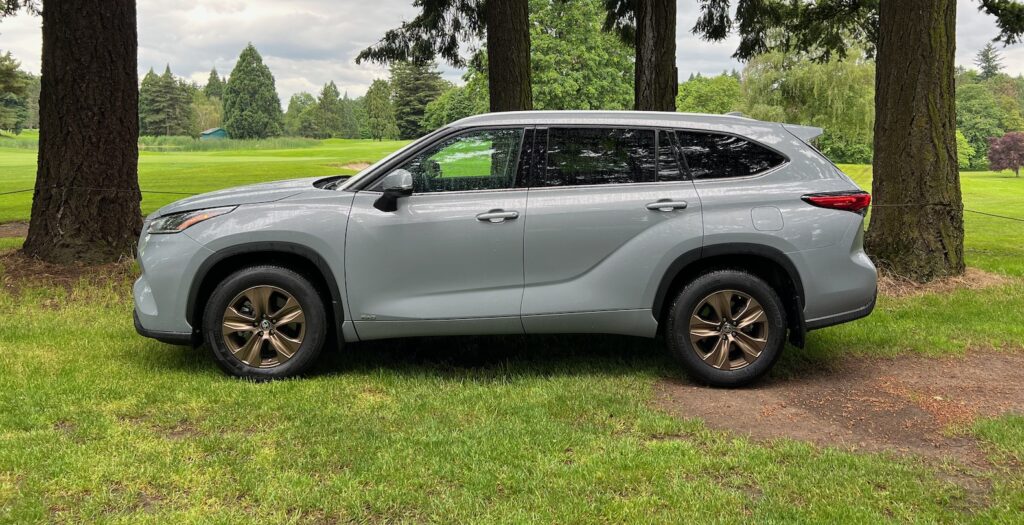
In this generation the Highlander skips past its dowdy past and goes straight for the digital French curve in the designer’s virtual toolkit. The nose changes shape from plainer base models to a “Predator”-style teeth-gnasher on the XSE model. The arches look less than swollen, and they’re grafted on plainly stamped door panels. The roofline tapers down to the tail without much drama. It all compiles into a disjointed but athletic look that veers far from the mock-minivan shapes in its past.
More responsive than ever, the Highlander’s also efficient as a Hybrid. The Highlander knows its place in the crossover-SUV realm. It’s a minivan in all but name, and that’s not backhanded praise. Today’s minivans have good handling and acceleration, and the Highlander does too, even an XSE model with stiffer tuning and heavier steering.
That V-6 puts out strong acceleration. The 295-hp 3.5-liter V-6 couples to an 8-speed automatic transmission and front- or all-wheel drive for 0-60 mph times in the seven-second range. The Highlander weighs from about 4,100 pounds to more than 4,400 in high-spec models, but it can still step smartly off the line, pass with brisk response, and pull a trailer of up to 5,000 lb.
With an independent suspension and tires ranging from 18 to 20 inches, the Highlander steers and rides well. It soaks up road seams and bumps with aplomb, though the smaller wheels on XLE trims and below forgive poorly maintained roads with more equanimity; Hybrids pat the road smooth even more with their battery weight. We’re not convinced we need the 20-inch wheels or the sport tuning of the XSE; any Highlander can chirp its tires, a strange but exhilarating thing to note in a big three-row family cruiser.
All-wheel drive comes in three flavors to supplant standard front-wheel drive. The lower-spec version has a simple setup that splits up to 50 percent of power to the rear wheels when it detects slip. Higher-spec non-hybrid models offer a system with rear-axle torque-vectoring; it can split power front-to-back and then side-to-side across the rear wheels, for even more usable traction.
The Hybrid crossover has the third system. Its 243-hp, 2.5-liter inline-4 and electric motor, supported by a nickel-metal-hydride battery pack, can team up with a motor on the rear wheels to deliver through-the-road all-wheel drive, which means that the motor only powers the back wheels when the front wheels slip.
Highlander Hybrids top the three-row gas-mileage rankings. In Hybrid editions it’s excellent for its size; other models fare OK. A V-6 with all-wheel drive is EPA-rated at 20 mpg city, 27 highway, 23 combined, according to the EPA. With front-wheel drive, the V-6 checks in at 21/29/24 mpg. We’d spec out a Hybrid for top fuel economy. With front-wheel drive, the Hybrid earns EPA ratings of 36/35/36 mpg; with all-wheel drive it’s 35/35/35 mpg except for Limited and Platinum models rated at 35/34/35 mpg due to more feature content and therefore more weight.
Crash-test scores are good, but the NHTSA has one lower score. It earns top marks from both safety agencies and has standard automatic emergency braking. The IIHS rates the Highlander as “Good” in all crash tests, but its headlights range from “Good” on Platinum models to “Acceptable” on others. That’s still enough for a Top Safety Pick+ award. The NHTSA gives the Highlander five stars overall, but publishes a four-star rating for front-impact protection.
All Highlanders have automatic emergency braking, active lane control, and adaptive cruise control. All but the base version have blind-spot monitors and many can be fitted with a surround-view camera system and parking sensors, helpful since the Highlander’s rearward vision gets blocked by thick roof pillars.
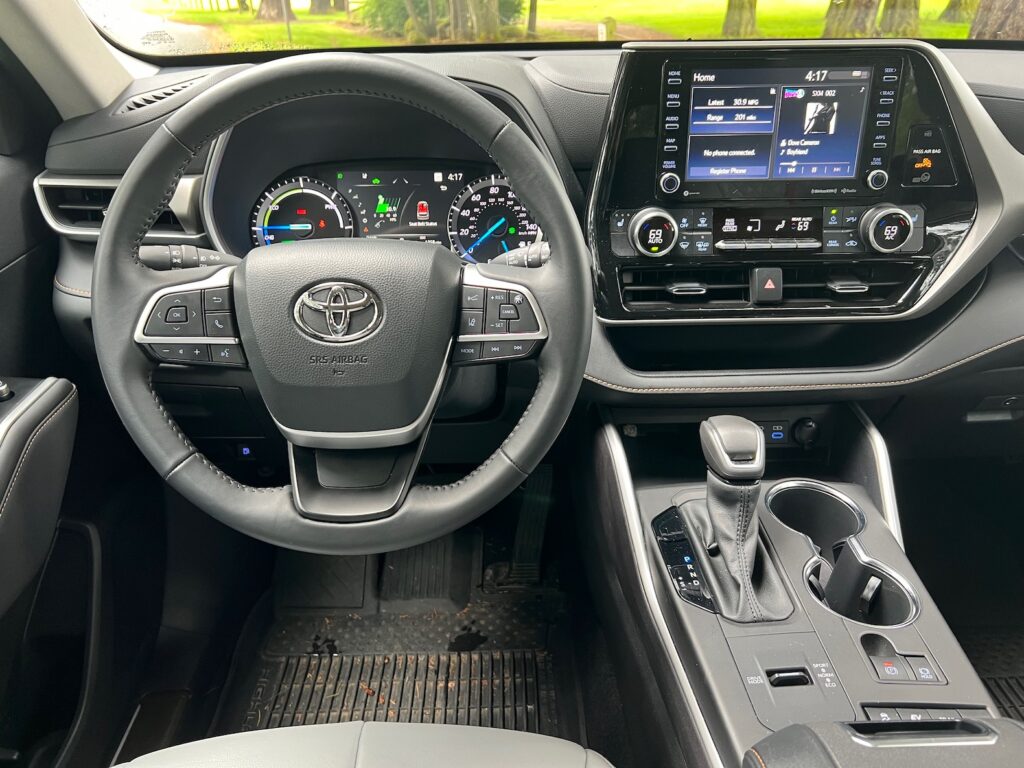
Inside, a tiered dash smooths out the first impressions generated by the body. It’s decked out with lots of small-item storage, and controls and a touchscreen that cant toward the driver. Base versions have an 8.0-inch display; the bigger 12.3-inch touchscreen dominates the dash, but doesn’t overwhelm the tasteful selections of trim that flank it.
Eight people can fit inside the Highlander, plus some cargo. The Highlander reaches for three-row SUV stardom with up to eight seats and a big cargo area. It does well, with points for its front- and rear-seat comfort, cargo space, and the ability to transport five large passengers without winding up in family court.
At 194.4 inches long, on a 112.2-inch wheelbase, the Highlander sizes up with the Honda Pilot and Nissan Pathfinder. In front, its wide seats provide good comfort for lots of body types and good adjustment range. The driver seat has power adjustment on all models; passengers on the XLE and higher-spec versions get power too. Base cloth upholstery upconverts to synthetic leather on most trims, and most versions also have heated front seats with options for cooling and second-row heating.
Row two has 41.1 inches of leg room and well-sculpted cushions, which makes the Highlander generously sized for most passengers. The bench can be swapped for captain’s chairs; in either case, the seats can move up for easier third-row access.
Small people fit best in the third row. It has just 27.7 inches of leg room, and though the second row seats can slide up to make more space, the way back seat lacks shoulder room for bigger people, too. The Highlander sports 16.0 cubic feet of space behind its third row seat, and 48.4 cubic feet when row three’ folded away. Behind the front seats it offers up 84.3 cubic feet.
The $36,380 Highlander L has plenty of standard features, including 18-inch wheels, a power driver seat, and an 8.0-inch touchscreen with Android Auto and Apple CarPlay. All-wheel drive costs $1,600. All Highlanders carry an average 3-year/36,000-mile warranty. You’ll be more pleasured by the $41,580 Highlander XLE in hybrid or non-hybrid spec. It has heated front seats, a power front passenger seat, a power tailgate, and a power sunroof.
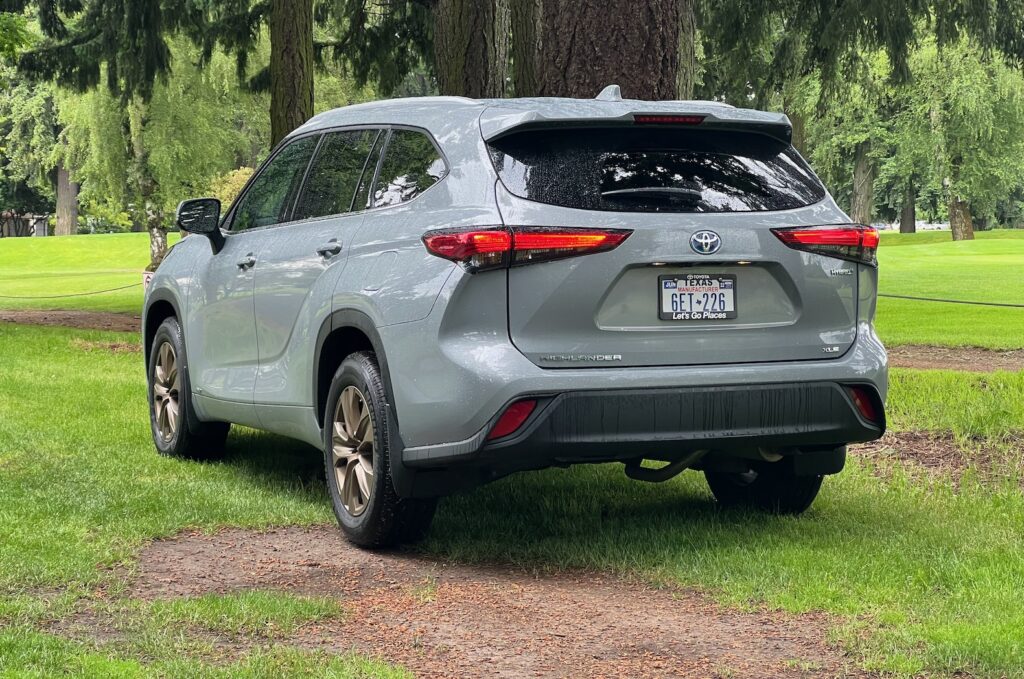
The Highlander XSE gains a sport suspension that we think isn’t worth the spend, but you might like the new Bronze edition hybrid for its colorful wheels and accents. The $52,135 Highlander Platinum presses up against Lexus offerings with its premium audio, 20-inch wheels, heated and cooled front seats, leather upholstery, heated second-row seats, 12.3-inch touchscreen, head-up display, and surround-view camera system.
The large three-row crossover segment is currently a hotly contested battleground with strong players from multiple manufacturers. Luckily the 2022 Toyota Highlander is one of the best. With a large inviting cabin, modern styling, and leading fuel efficiency; the Highlander impresses. The new for 2022 Bronze Edition makes the Highlander even better with attractive styling and a great value.

